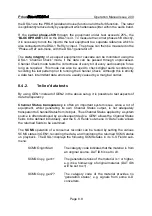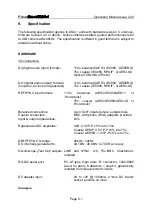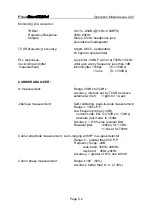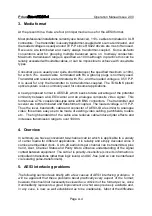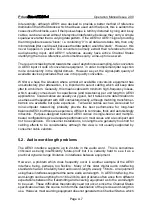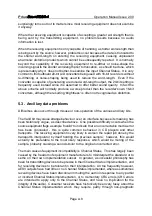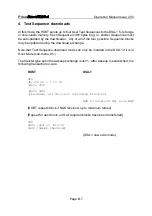
Prism
Operation Manual Issue 2.00
Page A.2
This coding scheme is often regarded as a way of 'combining clock and data' on a
single carrier. An 'NRZ' serial data scheme (such as SDIF-2) has only one 'cell' per bit,
so a long series of 0s or 1s would be impossible to recover since it would not be
possible to tell where one bit ends and the next starts. SDIF-2 solves this problem by
sending an extra clock signal on a separate cable (in the case of SDIF-2 a Wordclock,
which is generally multiplied in a PLL in the receiver to derive a bit-reading clock). This
has two drawbacks; an extra cable is required, and if the timing relationship between
clock and data is lost (for example by use of unequal cable lengths for clock and data),
the data may be incorrectly recovered. In contrast, the AES3 carrier needs only one
cable for two channels and is easy to decode since transitions are guaranteed to be
frequent.
A 'preamble' allows the start of the sub-frame to be picked out of what would otherwise
be an endless stream of biphase-mark 1s and 0s, because it violates the biphase-mark
rule: It doesn't have a transition at least every bit-period. Actually a different preamble
pattern is transmitted for the A and B sub-frames so that the channels can be
distinguished. These are the 'X' and 'Y' preambles respectively.
Only one Channel Status bit per channel per sample-period is carried on the interface,
but these accumulate into a complex pattern over cycles of 192 sample periods, thus
the entire Channel Status pattern is transacted every few milliseconds. In order to
recognise the start of the 192-bit cycle, a third preamble type ('Z') is substituted for 'X'
every 192 sample periods. The occurrence of 'Z' instead of 'X' precedes the first frame
of the Channel Status cycle.
The primary audio sampling rates supported by AES3 are 32kHz, 44.1kHz and 48kHz.
Close variants (for example 44.056kHz and 47.997kHz) also exist, often to
accommodate NTSC video drop-frame/non-drop-frame variations. Some special
application-specific rates also occur, such as 37.8kHz for CD-I. Lower rates are

